Rock Monitor
- March 11, 2024
- 0 comment
The rock monitor, scientifically known as Varanus albigularis, is a captivating reptile renowned for its imposing size and striking appearance. Found primarily in the rocky outcrops, savannas, and semi-arid regions of sub-Saharan Africa, these lizards exhibit a remarkable array of colors and patterns, ranging from muted grays and browns to vibrant yellows and oranges, which aids in their camouflage among rocky terrain. With adults reaching lengths of up to 2 meters (6.6 feet) and weighing over 20 kilograms (44 pounds), rock monitors are among the largest lizard species on the African continent. They are highly adaptable creatures, capable of thriving in diverse habitats such as deserts, forests, and grasslands.
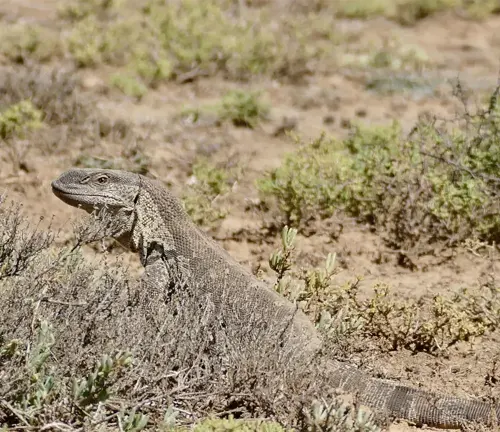
Their diet is equally diverse, encompassing small mammals, birds, eggs, insects, and carrion, which they hunt with their sharp claws and powerful jaws. Despite their formidable size and predatory prowess, rock monitors are generally shy and non-aggressive towards humans, preferring to avoid confrontation whenever possible. However, they play a crucial role in their ecosystems as both predators and scavengers, helping to regulate populations of small animals and contributing to nutrient recycling through their consumption of carrion. Overall, rock monitors are fascinating reptiles that inspire awe and admiration among those who encounter them in the wild.
| Attribute | Description |
|---|---|
| Scientific Name | Varanus albigularis |
| Common Name | Rock monitor |
| Habitat | Rocky outcrops, savannas, semi-arid regions |
| Distribution | Sub-Saharan Africa |
| Size | Up to 2 meters (6.6 feet) in length |
| Weight | Over 20 kilograms (44 pounds) |
| Coloration | Varied shades of gray, brown, yellow, orange |
| Diet | Small mammals, birds, eggs, insects, carrion |
| Hunting Method | Ambush, stealth, agility |
| Behavioral Patterns | Diurnal, shy towards humans |
| Role in Ecosystem | Predator, scavenger, contributes to nutrient recycling |
| Conservation Status | Not currently classified as endangered |
Rock monitors, scientifically known as Varanus albigularis, are fascinating reptiles that belong to the family Varanidae. These creatures are revered for their impressive size, unique appearance, and intriguing behaviors. Let’s delve into the world of rock monitors and uncover the mysteries surrounding these stealthy giants.
Habitat and Distribution


The habitat and distribution of rock monitors are primarily centered in sub-Saharan Africa, encompassing a wide range of environments. These versatile reptiles are commonly found in rocky outcrops, savannas, semi-arid regions, and even forested areas. They demonstrate a remarkable ability to adapt to diverse habitats, including deserts, grasslands, and scrublands. Within their range, rock monitors seek out sheltered areas such as crevices, burrows, and hollow logs for refuge and nesting. Their distribution spans across countries such as South Africa, Namibia, Botswana, Zimbabwe, and other parts of the African continent where suitable habitats are available. Despite facing habitat fragmentation and human encroachment in some areas, rock monitors persist in various ecosystems, playing vital roles as predators and scavengers.
Physical Description
Size and Weight
Rock monitors are among the largest lizard species in Africa, boasting impressive dimensions. Adults can reach lengths of up to 2 meters (6.6 feet) from snout to tail tip, making them formidable predators in their ecosystems. In addition to their considerable length, rock monitors are also robustly built, with some individuals weighing over 20 kilograms (44 pounds). These substantial dimensions contribute to their dominance within their habitats and enable them to tackle a diverse range of prey items.

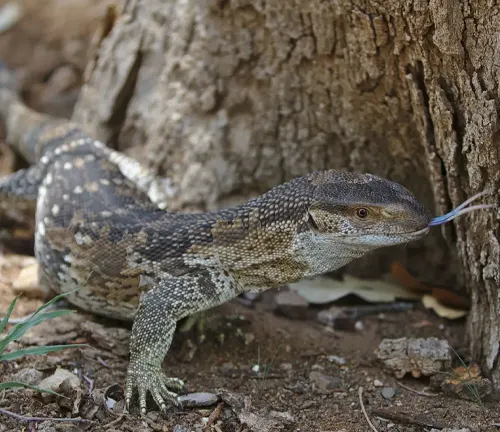
Coloration and Patterns
The coloration and patterns of rock monitors are highly variable and serve as effective camouflage in their rocky habitats. Their bodies can display a spectrum of hues, including shades of gray, brown, yellow, and orange, often blending seamlessly with the surrounding environment. Intricate patterns and markings adorn their scales, providing further camouflage and aiding in concealment among rocks and vegetation. This cryptic coloration not only helps rock monitors evade detection by predators but also assists them in ambushing prey.
Adaptations for Survival
Rock monitors possess a suite of adaptations that enhance their survival in their challenging environments. One notable adaptation is their sharp claws and powerful jaws, which they utilize for climbing, digging, and capturing prey. These formidable appendages enable them to navigate rugged terrain with ease and secure a firm grip on slippery surfaces. Additionally, rock monitors have keen senses of sight and smell, allowing them to detect prey from a distance and locate potential threats. Their agile bodies and quick reflexes further contribute to their effectiveness as hunters and escape artists in the wild. Overall, these adaptations equip rock monitors with the tools they need to thrive in their rocky habitats and maintain their status as apex predators.
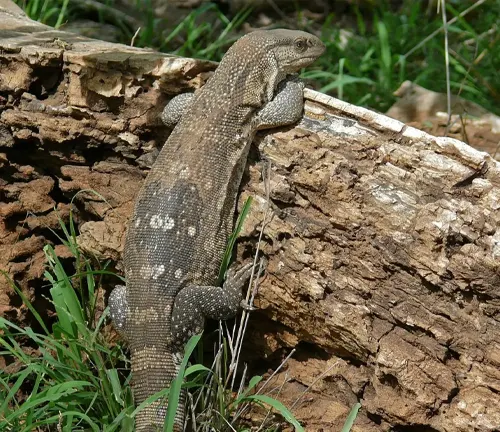
Behavior and Diet
Rock monitors are primarily diurnal creatures, meaning they are most active during the day. They spend their time basking in the sun, foraging for food, and exploring their surroundings.
Hunting and Feeding Habits
Rock monitors are voracious predators with a diverse diet that includes small mammals, birds, eggs, insects, and carrion. They employ a combination of stealth, agility, and opportunism to capture their prey. Using their keen senses of sight and smell, rock monitors actively forage for food during the day, scouring their rocky habitats for potential meals. They are skilled hunters, capable of ambushing prey from concealed positions or actively pursuing it through rocky crevices and vegetation.
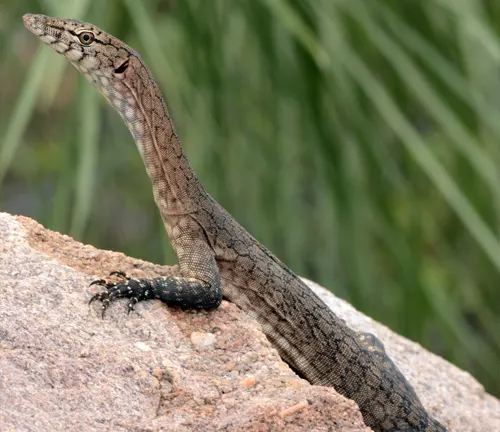
When hunting larger prey such as rodents or birds, rock monitors rely on their sharp claws and powerful jaws to immobilize and subdue their quarry. Once caught, they may consume their prey on-site or retreat to a secluded location to feed in peace. In addition to hunting live prey, rock monitors are opportunistic scavengers, feeding on carrion and leftover scraps whenever the opportunity arises.
Interaction with Other Species
Rock monitors play a crucial role in their ecosystems as both predators and scavengers, influencing the populations of other species and contributing to nutrient recycling. Their presence helps regulate the abundance of small mammals, birds, and insects, thereby exerting indirect effects on plant communities and ecosystem dynamics.
Despite their predatory nature, rock monitors may also interact with other species in more complex ways. They may compete with other predators such as birds of prey or carnivorous mammals for food resources, leading to interspecific competition. Additionally, rock monitors may serve as hosts for parasites and pathogens that can impact the health of other wildlife species in their habitats.
In some cases, rock monitors may form symbiotic relationships with other organisms. For example, they may act as ecosystem engineers by excavating burrows that are subsequently used by other animals for shelter or nesting. Similarly, their scavenging activities contribute to the decomposition of organic matter, facilitating nutrient cycling and supporting the diversity of scavenger communities.
Reproduction
Mating Behaviors
Rock monitors exhibit fascinating mating behaviors characterized by elaborate courtship rituals and displays. During the breeding season, which typically occurs during the warmer months of the year, male rock monitors actively seek out female partners. To attract females, male monitors engage in a variety of courtship behaviors, including head bobbing, throat puffing, and tail waving. These displays serve to demonstrate the male’s dominance and fitness to potential mates.


Nesting and Egg-laying
After mating, female rock monitors seek out suitable nest sites where they can lay their eggs. Preferred nest sites typically include sandy or loamy soils, which provide adequate insulation and drainage for the developing eggs. Rock monitors may also utilize pre-existing burrows, hollow logs, or rocky crevices as nest sites, excavating shallow depressions in the substrate to deposit their eggs.
Once the nest site has been selected, the female lays a clutch of eggs, which she carefully buries or conceals to protect them from predators and environmental extremes. The number of eggs laid can vary depending on factors such as the female’s size, age, and reproductive condition, but clutches typically range from 10 to 30 eggs.
After egg-laying, the female assumes the responsibility of incubating the eggs, using her body heat to regulate the temperature and humidity levels within the nest. Incubation periods can vary but generally last between 8 to 10 weeks, during which time the female remains vigilant in guarding the nest against potential threats.
Parental Care
Parental care among rock monitors is minimal, with females providing limited assistance to their offspring primarily during the incubation period. After laying their eggs in carefully selected nest sites, female rock monitors take on the responsibility of guarding the nest and regulating the incubation environment.
During this time, females exhibit behaviors aimed at protecting the nest from potential threats such as predators, parasites, and environmental disturbances. They may remain in close proximity to the nest, periodically inspecting it for signs of damage or disturbance. In some cases, females may also adjust the position of the eggs within the nest to optimize temperature and humidity levels for optimal incubation.
Despite their vigilance, female rock monitors do not provide direct care to their hatchlings once they emerge from the eggs. Unlike some reptile species that exhibit parental care such as guarding or feeding their young, rock monitors rely on their offspring’s innate instincts and abilities to survive in their environment.
Conservation Status
The conservation status of rock monitors varies depending on the specific subspecies and their respective habitats. Generally, rock monitors are not currently classified as endangered, but they face a range of threats that jeopardize their populations in certain regions.
Habitat loss and degradation pose significant challenges to rock monitors, particularly in areas where human development encroaches upon their natural habitats. Deforestation, urbanization, and agricultural expansion contribute to habitat fragmentation and destruction, reducing the availability of suitable habitat for rock monitors and limiting their ability to find food, shelter, and mates.
In addition to habitat loss, rock monitors are also susceptible to direct threats from human activities such as poaching and illegal wildlife trade. These reptiles are often targeted for their skins, which are highly valued in the exotic pet trade and for traditional medicine. Overexploitation for commercial purposes can have detrimental effects on rock monitor populations, leading to declines in their numbers and genetic diversity.
Furthermore, human-wildlife conflicts can arise when rock monitors come into contact with humans in agricultural areas or urban environments. Negative interactions, such as predation on livestock or perceived threats to human safety, can result in retaliatory killings or persecution of rock monitors.
Despite these challenges, several conservation organizations and initiatives are working to protect rock monitors and their habitats. Conservation efforts focus on habitat conservation and restoration, law enforcement to combat poaching and illegal wildlife trade, and community education and engagement to promote coexistence between humans and rock monitors.
Human Interaction
Cultural Significance
Rock monitors hold cultural significance in many African societies, where they are often revered as symbols of strength, wisdom, and resilience. In some traditional beliefs and folklore, rock monitors are associated with mythical creatures or spiritual beings, embodying characteristics such as courage, protection, and longevity.
Conflicts with Humans
Despite their cultural significance, rock monitors may come into conflict with humans in certain situations, particularly in areas where their habitats overlap with human settlements or agricultural lands. Human-wildlife conflicts can arise when rock monitors are perceived as threats to livestock, crops, or property, leading to retaliatory killings or persecution by local communities.
Legal Protections
Several countries have implemented laws and regulations to protect rock monitors and other wildlife species from exploitation, habitat destruction, and human persecution. These legal protections may include measures such as:
- Designation of protected areas and wildlife reserves where rock monitors are afforded habitat protection and conservation.
- Prohibition of hunting, trapping, or trading rock monitors without proper permits or licenses.
- Enforcement of penalties and fines for illegal poaching, trafficking, or harming of rock monitors.
- Promotion of public education and awareness initiatives to foster appreciation for rock monitors and encourage responsible coexistence with wildlife.
Different Species
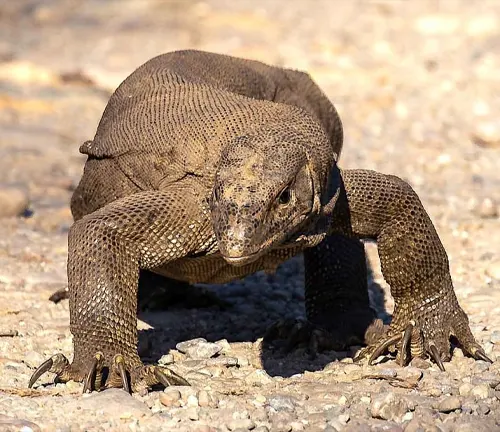
Bengal monitor
(Varanus bengalensis)
Found in South Asia, including India, Bangladesh, Sri Lanka, and parts of Southeast Asia. They are known for their adaptability to various habitats, including rocky areas.
Savannah monitor
(Varanus exanthematicus)
Native to sub-Saharan Africa, savannah monitors are commonly found in savannas, grasslands, and rocky outcrops. They are smaller in size compared to the rock monitor but share similar habitats.
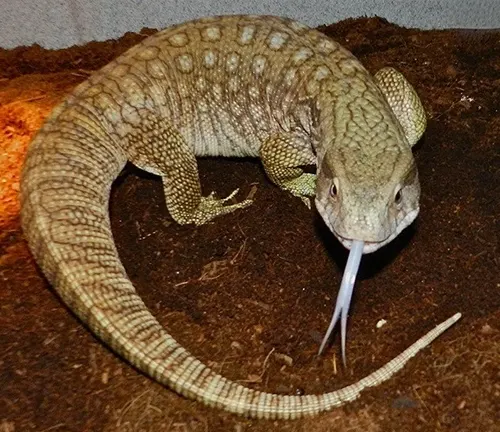
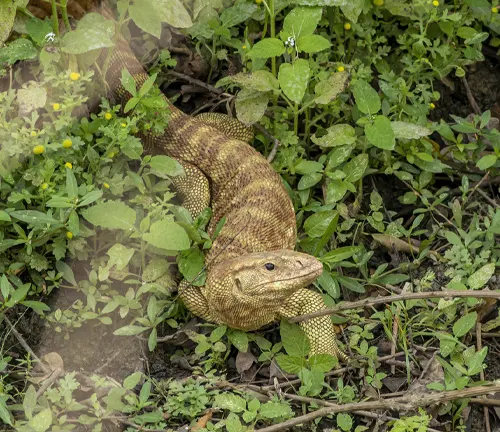
Yellow monitor
(Varanus flavescens)
Endemic to Indonesia, particularly in the islands of Sulawesi and Buton. They inhabit forests, savannas, and rocky areas, displaying a yellowish coloration.
Black-throated monitor
(Varanus albigularis ionidesi)
Subspecies of the rock monitor found in Tanzania. They inhabit rocky outcrops and woodlands, characterized by their black throat markings.

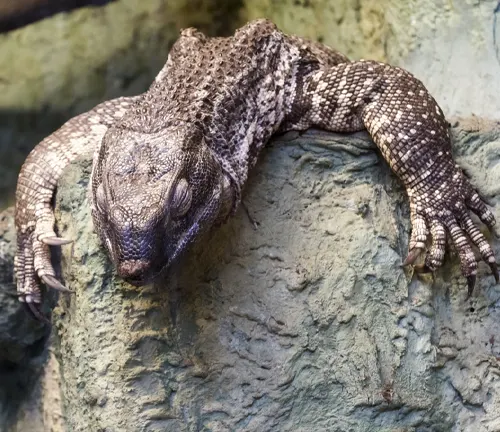
White-throated monitor
(Varanus albigularis albigularis)
Another subspecies of the rock monitor found in southern Africa. They are typically found in rocky habitats and have distinct white throat markings.
Frequently Asked Questions (FAQs)
- Are rock monitors dangerous to humans?
While rock monitors are generally shy and non-aggressive towards humans, they can become defensive if cornered or threatened. It’s important to exercise caution and respect their space when encountering them in the wild. - What should I do if I encounter a rock monitor?
If you come across a rock monitor in its natural habitat, observe from a safe distance and avoid making sudden movements or loud noises. Give the lizard ample space to retreat and do not attempt to handle or disturb it. - Can rock monitors be kept as pets?
While rock monitors are occasionally kept as pets by experienced reptile enthusiasts, they require specialized care and large enclosures to thrive. It is essential to research thoroughly and ensure compliance with local regulations before acquiring one as a pet. - How long do rock monitors live in the wild?
On average, rock monitors have a lifespan of 10 to 15 years in the wild, although some individuals may live longer under optimal conditions. - Are rock monitors endangered?
While rock monitors are not currently classified as endangered, they face significant threats due to habitat destruction, poaching, and human persecution. Conservation efforts are crucial for safeguarding their populations and habitats. - Do rock monitors hibernate?
Rock monitors do not undergo true hibernation, but they may enter a period of decreased activity during cooler months. They seek shelter in burrows or rocky crevices to regulate their body temperature. - What do rock monitors eat in captivity?
In captivity, rock monitors can be fed a diet consisting of appropriately sized rodents, insects, eggs, and occasional fruits or vegetables. It’s important to provide a varied diet to ensure nutritional balance. - How large of an enclosure does a rock monitor need?
Rock monitors require large enclosures with ample space for climbing, hiding, and exploring. A minimum enclosure size of 6 feet long, 4 feet wide, and 6 feet tall is recommended for adult specimens. - Do rock monitors make vocalizations?
Rock monitors are relatively silent creatures, but they may emit hissing or growling sounds when feeling threatened or agitated. These vocalizations serve as warning signals to potential predators or intruders. - Can rock monitors swim?
Yes, rock monitors are capable swimmers and may utilize bodies of water for foraging or escaping predators. They have powerful limbs and streamlined bodies that enable them to navigate through water efficiently. - Are there any legal restrictions on owning rock monitors as pets?
In some regions, there may be regulations regarding the ownership and trade of rock monitors as pets. It’s essential to research local laws and obtain any necessary permits or licenses before acquiring one.



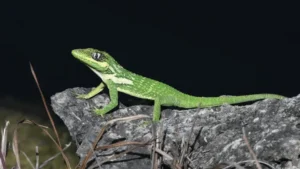


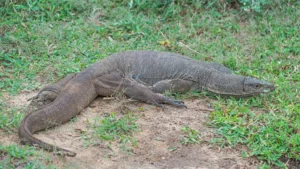

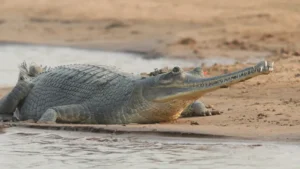
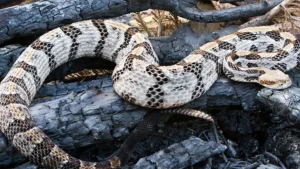
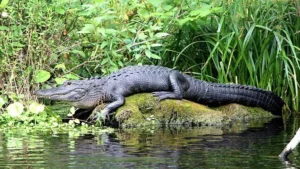
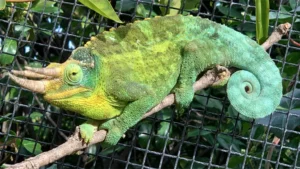
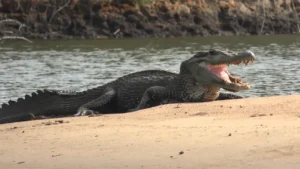
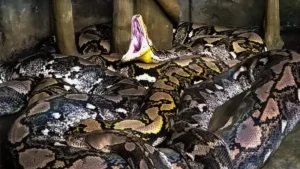
Leave your comment